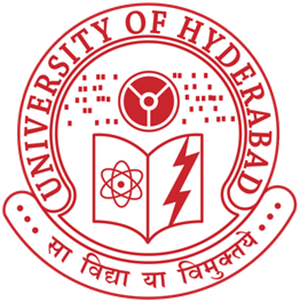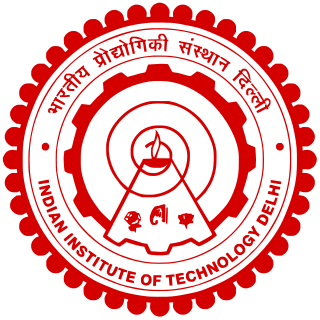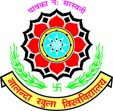India, officially the Republic of India, has full diplomatic relations with 201 states, including Palestine, the Holy See, and Niue. The Ministry of External Affairs (MEA) is the government agency responsible for the conduct of foreign relations of India. With the world's third largest military expenditure, second largest armed force, fifth largest economy by GDP nominal rates and third largest economy in terms of purchasing power parity, India is a prominent regional power and a rising superpower.

The Maldives has remained an independent nation throughout its recorded history, save for a brief spell of Portuguese occupation in the mid-16th century. From 1887 to 1965, the country was a British protectorate while retaining full internal sovereignty. At its independence in 1965, the Maldives joined the United Nations on 20 September.

The South Asian Association for Regional Cooperation (SAARC) is the regional intergovernmental organization and geopolitical union of states in South Asia. Its member states are Afghanistan, Bangladesh, Bhutan, India, Maldives, Nepal, Pakistan, and Sri Lanka. SAARC comprises 3% of the world's land area, 21% of the world's population and 5.21% of the global economy, as of 2021.

Delhi University, formally the University of Delhi, is a collegiate research central university located in Delhi, India. It was founded in 1922 by an Act of the Central Legislative Assembly and is recognized as an Institute of Eminence (IoE) by the University Grants Commission (UGC). The university has 16 faculties and 86 departments distributed across its North and South campuses, and remaining colleges across the region. It has 91 constituent colleges. Delhi University is one of the largest university systems in the world with over 400,000 students on its campuses and affiliated colleges. The Vice President of India serves as the university chancellor. The university is ranked 11th by National Institutional Ranking Framework 2023.

The National Academy of Legal Studies and Research (NALSAR), is a public law school and a National Law University located in Shamirpet, Hyderabad, Telangana, India, and is considered as one of the best law schools in India.

The University of Hyderabad is a top-ranking public central research university located in Hyderabad, Telangana, India.

The Annamalai University is a public state university in Chidambaram, Tamil Nadu, India. The 1,500-acre (6.1 km2) sprawling campus offers courses of higher education in arts, science, engineering, management, humanities, agriculture, and physical education. The university also provides more than 500 courses through distance education. With over 32,480 students residing on campus, it is one of the largest teaching, and residential universities in Asia, and is among the most reputed and ranked universities in India including the rankings from NIRF, QS World University Rankings, Times University Rankings, CWTS Leiden Ranking, India Today Magazine, India Today MDRA, AISHE, ARIIA, SCImago Institutions Rankings.

Indira Gandhi National Open University, known as IGNOU, is a public distance learning university located in New Delhi, India. Named after the former Prime Minister of India Indira Gandhi, the university was established in 1985 with a budget of ₹20 million, after the Parliament of India passed the Indira Gandhi National Open University Act, 1985. IGNOU is run by the central government of India, and with a total active enrollment of over 4 million students, it is the largest university in the world.

IIT Delhi, officially the Indian Institute of Technology Delhi, is a public institute of technology located in Delhi, India. It is one of the 23 Indian Institutes of Technology created to be Centre of Excellence for India's training, research and development in science, engineering and technology.

Nalanda Open University (NOU) is a university at Patna in Bihar state, India. It is the only university in Bihar providing education through distance and open education. Nalanda Open University Degree/Diploma /Certificates are eligible for higher studies, public & private sector employment and service promotions. It is recognized by University Grants Commission (UGC). It is a member of Association of Indian Universities which is mainly concerned with the recognition of degrees/diplomas awarded by the Universities in India, which are recognized by the University Grants Commission, New Delhi, and abroad for the purpose of admission to higher degree courses in Indian Universities. It is an open university which means that it follows an open-door academic policy and is open to everyone for admission with minimum requirements.

South Asia is the southern subregion of Asia, which is defined in both geographical and ethnic-cultural terms. As commonly conceptualized, the modern states of South Asia include Afghanistan, Bangladesh, Bhutan, India, Maldives, Nepal, Pakistan, and Sri Lanka. South Asia borders East Asia to the northeast, Central Asia to the northwest, West Asia to the west and Southeast Asia to the east. Topographically, it is dominated by the Indian subcontinent and is bounded by the Indian Ocean in the south, and the Himalayas, Karakoram, and Pamir Mountains in the north.
Mahendra P. Lama is an Indian professor and a development economist who was the pro-vice chancellor of IGNOU and the founding vice chancellor of Sikkim University in India. At the age of 45, he became the youngest vice chancellor of a National Central University in India. He is presently a senior Professor in the School of International Studies, Jawaharlal Nehru University, New Delhi; Chief Economic Adviser in the Government of Sikkim and Member of the Eminent Persons Group on Nepal-India Relations appointed by the Prime Ministers of India and Nepal.

Prof. Gopal Krishna Chadha was an Indian economist and academician for more than 40 years. He was the founding President of South Asian University, New Delhi. South Asian University was established in 2010 by the eight governments of South Asian Association for Regional Cooperation (SAARC). He authored 16 books besides contributing 98 research papers to national and international research journals on various development issues relating to India and other developing countries of Asia, notably South-Asia, Indonesia and China.
Secretary-General of the South Asian Association for Regional Cooperation is head of a SAARC Secretariat, which is headquartered in Kathmandu, Nepal. SAARC is an economic and geopolitical union between the eight South Asian member nations, Afghanistan, Bangladesh, Bhutan, India, Maldives, Nepal, Pakistan and Sri Lanka. Secretary-General is appointed for a three-year term by election by a council of Ministers from member states. Secretary-General is assisted by eight deputies, one from each nation, who also reside in Kathmandu. SAARC Secretariat was established in Kathmandu on 16 January 1987 by Bangladeshi diplomat Abul Ahsan, who was its first Secretary-General, and was inaugurated by King Birendra Bir Bikram Shah of Nepal. Since its creation, its member nations have contributed to a total of fourteenth General Secretaries. Golam Sarwar from Bangladesh is the current Secretary-General of SAARC, having assumed charge on 4 March 2023.
The foreign policy of the Modi government is associated with the policy initiatives made towards other states by the current government of India after Narendra Modi assumed the office of prime minister on May 26, 2014.
The eighteenth summit of 'South Asian Association of Regional Cooperation' (SAARC) was held in Kathmandu, the capital of Federal Democratic Republic of Nepal during 26–27 November 2014. The theme of the summit was Deeper Integration for Peace and Prosperity, focused on enhancing connectivity between the member states for easier transit-transport across the region. Sushil Koirala, the then Nepalese prime minister, was the main host of the event which took place in Rastriya Sabha Griha The summit took place after an interval of three years as the previous summit was held in 2011 in Maldives.
Krishna Lal Chadha is an Indian horticultural scientist, author and a former National Professor of the Indian Council of Agricultural Research. He was honored by the Government of India, in 2012, with the fourth highest Indian civilian award of Padma Shri.

The South Asia Satellite, formerly known as SAARC Satellite, is a geostationary communications and meteorology satellite operated by the Indian Space Research Organisation for the South Asian Association for Regional Cooperation (SAARC) region. The satellite was launched on 5 May 2017. During the 18th SAARC summit held in Nepal in 2014, Indian Prime Minister Narendra Modi mooted the idea of a satellite serving the needs of SAARC member nations as a part of his neighbourhood first policy. Afghanistan, Bangladesh, Bhutan, Maldives, Nepal and Sri Lanka are the users of the multi-dimensional facilities provided by the satellite.
Rajkumari Amrit Kaur College of Nursing is a public funded institute administratively governed by the Ministry of Health and Family Welfare, Government of India. It is a constituent college of University of Delhi. The college ranked second in India for Nursing Education (2016).













